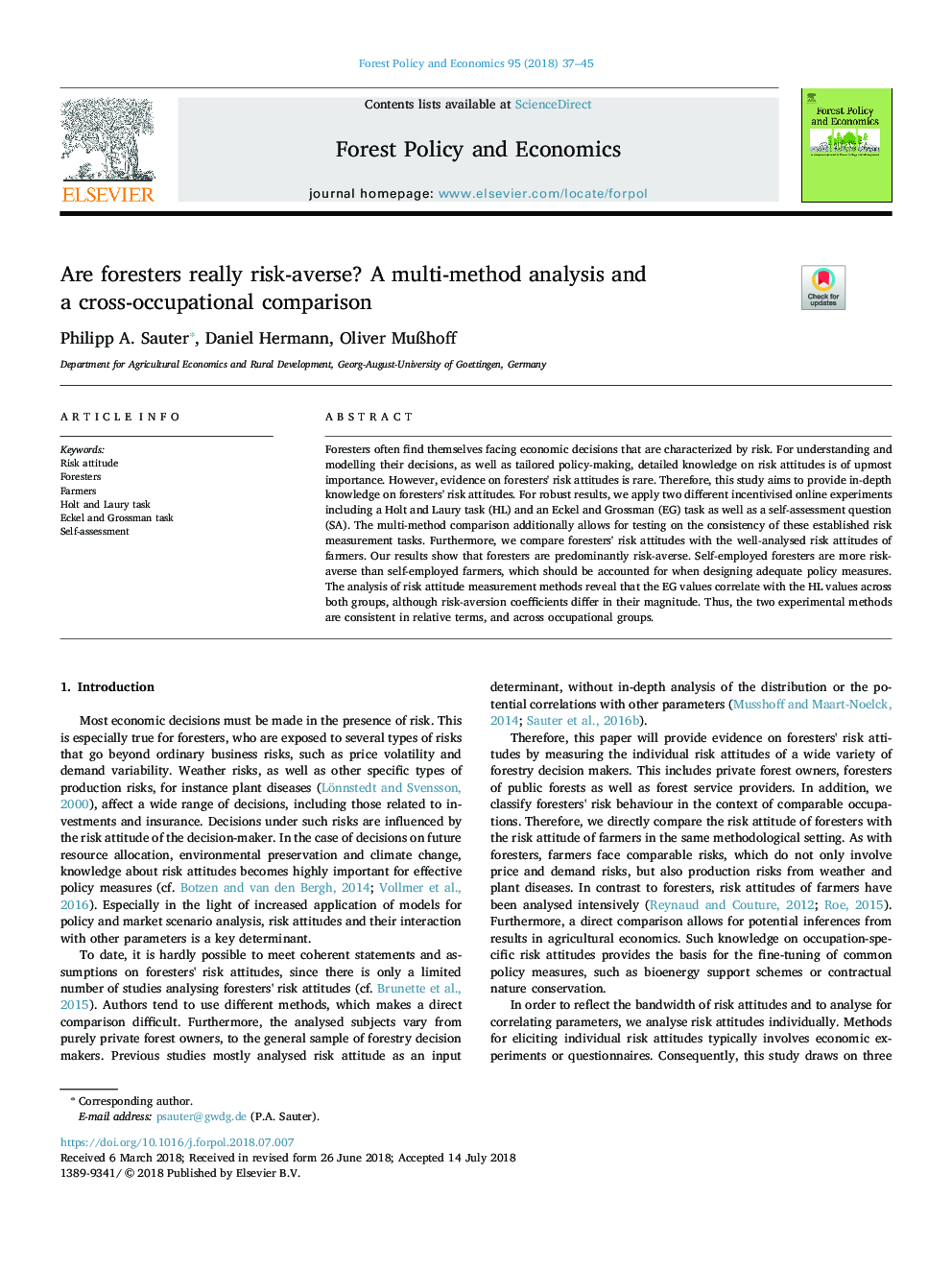| Article ID | Journal | Published Year | Pages | File Type |
|---|---|---|---|---|
| 6544701 | Forest Policy and Economics | 2018 | 9 Pages |
Abstract
Foresters often find themselves facing economic decisions that are characterized by risk. For understanding and modelling their decisions, as well as tailored policy-making, detailed knowledge on risk attitudes is of upmost importance. However, evidence on foresters' risk attitudes is rare. Therefore, this study aims to provide in-depth knowledge on foresters' risk attitudes. For robust results, we apply two different incentivised online experiments including a Holt and Laury task (HL) and an Eckel and Grossman (EG) task as well as a self-assessment question (SA). The multi-method comparison additionally allows for testing on the consistency of these established risk measurement tasks. Furthermore, we compare foresters' risk attitudes with the well-analysed risk attitudes of farmers. Our results show that foresters are predominantly risk-averse. Self-employed foresters are more risk-averse than self-employed farmers, which should be accounted for when designing adequate policy measures. The analysis of risk attitude measurement methods reveal that the EG values correlate with the HL values across both groups, although risk-aversion coefficients differ in their magnitude. Thus, the two experimental methods are consistent in relative terms, and across occupational groups.
Keywords
Related Topics
Life Sciences
Agricultural and Biological Sciences
Forestry
Authors
Philipp A. Sauter, Daniel Hermann, Oliver MuÃhoff,
